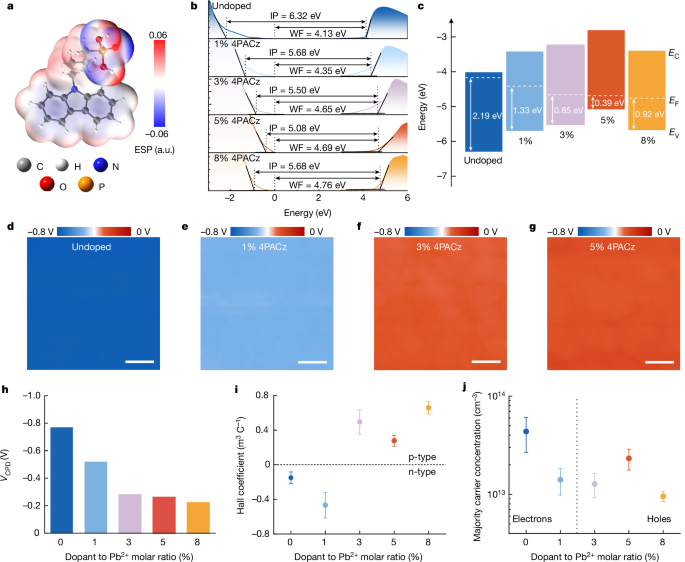Achieving Controllable p- and n-type Conductivity in High-Performance Perovskite Semiconductors
The article discusses the achievement of controllable p- and n-type conductivity in wide-bandgap perovskite semiconductors, which is crucial for modern electronics. Typically, doping of electron-accepting and electron-donating elements is used to achieve p- and n-type behaviors in semiconductors like silicon and gallium nitride. However, for the emerging class of halide perovskite semiconductors, reliable mechanisms for controlling charge conduction while maintaining high optoelectronic qualities were not yet discovered.
The researchers report that by incorporating a phosphonic acid molecular dopant with strong electron-withdrawing abilities, they were able to adjust the p- and n-type characteristics in a perovskite semiconductor. The resultant carrier concentrations exceeded 1013 cm−3 for both p- and n-type samples, with Hall coefficients ranging from −0.5 m3 C−1 (n-type) to 0.6 m3 C−1 (p-type). Importantly, the transition from n- to p-type conductivity was achieved while retaining high photoluminescence quantum yields of 70–85%.
The controllable doping in the emissive perovskite semiconductor enabled the demonstration of ultrahigh brightness (more than 1.1 × 106 cd m−2) and exceptional external quantum efficiency (28.4%) in perovskite light-emitting diodes with a simple architecture.
Tilpas resumé
Genskriv med AI
Generer citater
Oversæt kilde
Til et andet sprog
Generer mindmap
fra kildeindhold
Besøg kilde
www.nature.com
Controllable p- and n-type behaviours in emissive perovskite semiconductors - Nature
Vigtigste indsigter udtrukket fra
by Wentao Xiong... kl. www.nature.com 09-11-2024
https://www.nature.com/articles/s41586-024-07792-4
Dybere Forespørgsler
